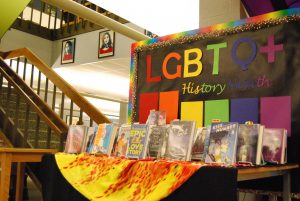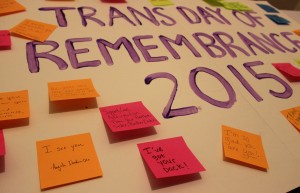Let’s ace sexuality: Asexual Awareness Week
Autumn may be the season for red, orange, yellow, and brown, but now it’s time to celebrate our black, grey, white, and purple with the arrival of asexual awareness week.
October 25, 2022
High school is the stage of life where the concept of sex is a touchy and sensitive topic— at the same time, it’s something most teenagers explore in-depth, naked and bare during this period. They are at the age where they want to know more about their tastes, preferences, limits, and more. Part of the growing up process is about discovering where you find yourself on the complex spectrum of sexual orientations and gender identities, after all. As such, this week is a chance to be all about specifically exploring the “A” section of the LGBTQIA+ community.
Asexual Awareness Week, or “Ace Week” for short, is the annual, international campaign to help spread awareness and build connections regarding asexuality who those who identify as asexual. It is the single week in the year completely dedicated to educating the public about what it means to be part of this amazing community. Founded by Sara Beth Brooks back in 2010 and the continued copious amounts of love and support received for this movement makes 2022 the 12th year Ace Week has been held.
“—Ace Weeks happens, and everyone seems to feel this sense of empowerment; to speak up and share their particular story or their particular ideas of what being ace means to them or what makes them happy about it,” explained Cody Daigle-Orians during an interview with the West Side Story. Known as a content creator and influencer on his social media AceDadAdvice, Daigle-Orians uses his own experiences as an asexual/homoromantic man to spread awareness of asexuality and help educate the LGBTQ+ youth. Ace Dad Advice is an education project which aims to support asexuality as an identity and offer advice to those youth who’d like to know more about their own sexuality. “It’s a fun week to really see more people speaking up and sharing their particular ace story.”
So what is asexuality exactly? The first thing to understand: asexuality is a spectrum, an umbrella term for many other microlabels that better describe their type of attraction. There is no set definition of what it means to be asexual— it can mean a variety of things to a variety of people. But as a whole, someone who identifies as asexual typically experiences little to no sexual attraction. Contrarily, someone who does experience sexual attraction is referred to as allosexual.
“Identity labels are what help us give a shape to our experience,” said Daigle-Orians. “—they frame it in a way that is helpful to us and then allows us to take our experience and share that with others.”
The asexual flag does its part in representing this idea as well. Created back in 2010, the design was thought up by a user of AVEN (the Asexual Visibility & Education Network), among other suggested ideas, before being voted as the winner. Earlier designs used as symbols included the AVEN Triangle, an upside-down triangle starting at white and getting darker going farther below. As written by user Siggy in their article about the history of the Ace flag, “The triangle was inspired by an old model of asexuality, where the white part represented the heterosexual-to-homosexual spectrum, and the black part represented asexuality. By the time AVEN gained popularity, the model itself was long defunct, but people still had an understanding of what the colors originally meant.”
The meanings of the flag colors are as follows— Black, asexuality; grey, grey-sexuality and demisexuality; white, allosexual and allies; and finally, purple, community. The choice for using purple was clarified by founder David Jay, who explains it comes from an old wives’ tale about how amethyst could prevent a person from getting drunk. AVEN is also where the practice of ace people wearing a black ring on their middle right finger came to be, although it is not universally recognized by all asexuals. The black acts as a neutral color, while the position of the ring is meant to act parallel to where one would usually place a wedding band.
What many people misunderstand is that sexual attraction doesn’t automatically mean a desire for sex, in which case it would be considered libido. The difference is nuanced but necessary to be aware of. The best comparison is hunger vs. craving; on one hand, hunger means you feel the need to eat, while on the other hand, cravings describe your desire for a certain food. It’s the same with libido and sexual attraction. Asexuality is basically being able to feel hunger, although what food you want to eat doesn’t really matter. Allosexuality is about knowing what type of food you prefer and being hungry at the same time. Of course, not all ace people feel hunger; sometimes they stay away from “food” completely— and that’s also fine.
Asexuality can mean you experience different types of attraction instead (physical, emotional, platonic, or even aesthetic), which goes against the common misconception that ace people aren’t able to love at all— a complete fallacy. Asexual people are fully capable of being involved in a romantic relationship, and the same for everyone else who experiences romantic attraction. The only exception is those who might identify as aroace, a combination of being both asexual and aromantic (feeling little to no romantic attraction).
People are often quick to disregard asexuality as merely a phase of one’s life, which isn’t necessarily wrong. It is possible for someone to become asexual later in life as well as no longer identify as ace as time goes on; however, it doesn’t automatically invalidate how one might have felt they identified as before. “If ace feels right to you, then take that on because you know your experience better than anyone. And if you decide later on that that’s not the case, you undo that decision and try again. We’re not stuck with any label or any identity decision forever, and you can continue to learn and grow over time,” said Daigle-Orians.










